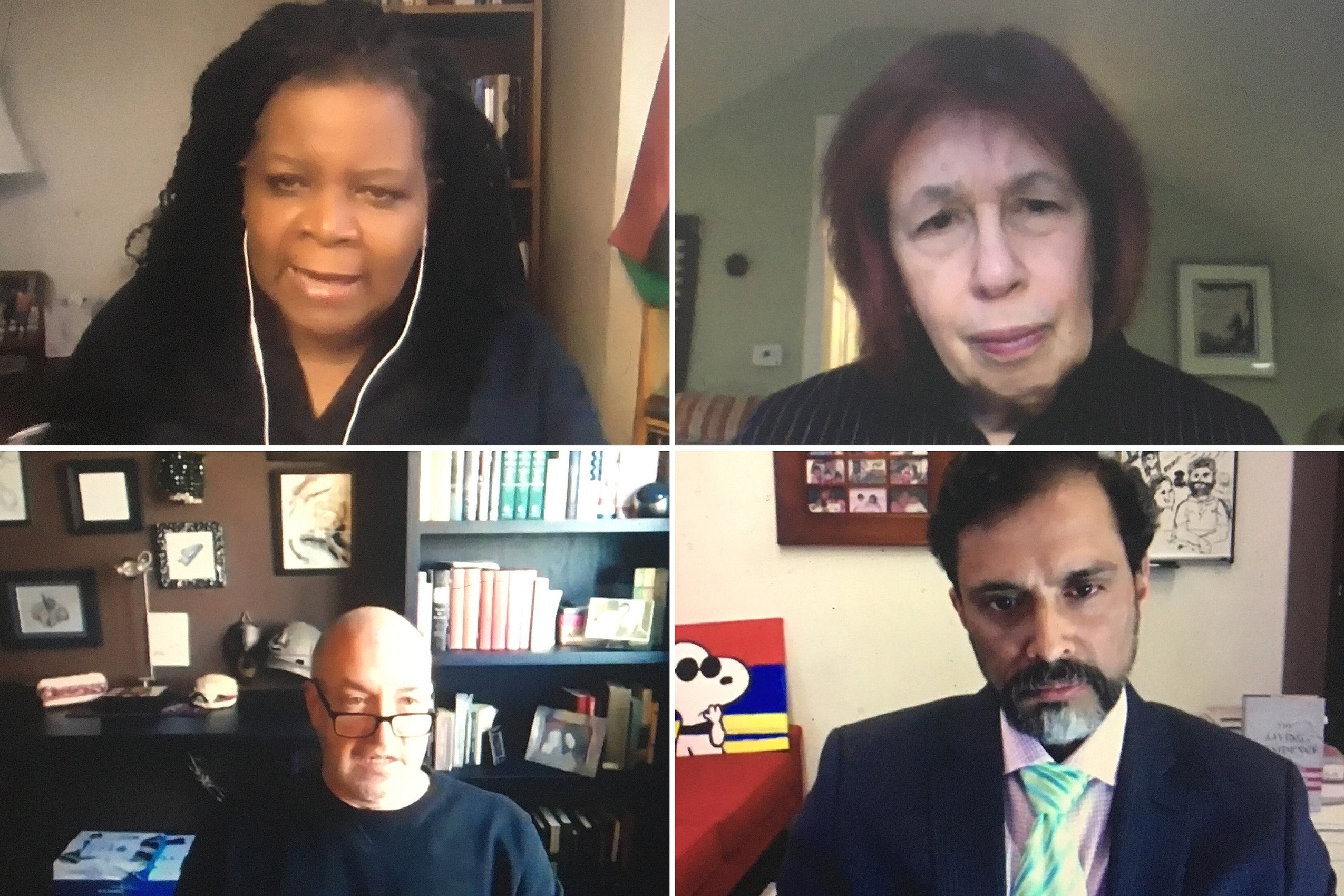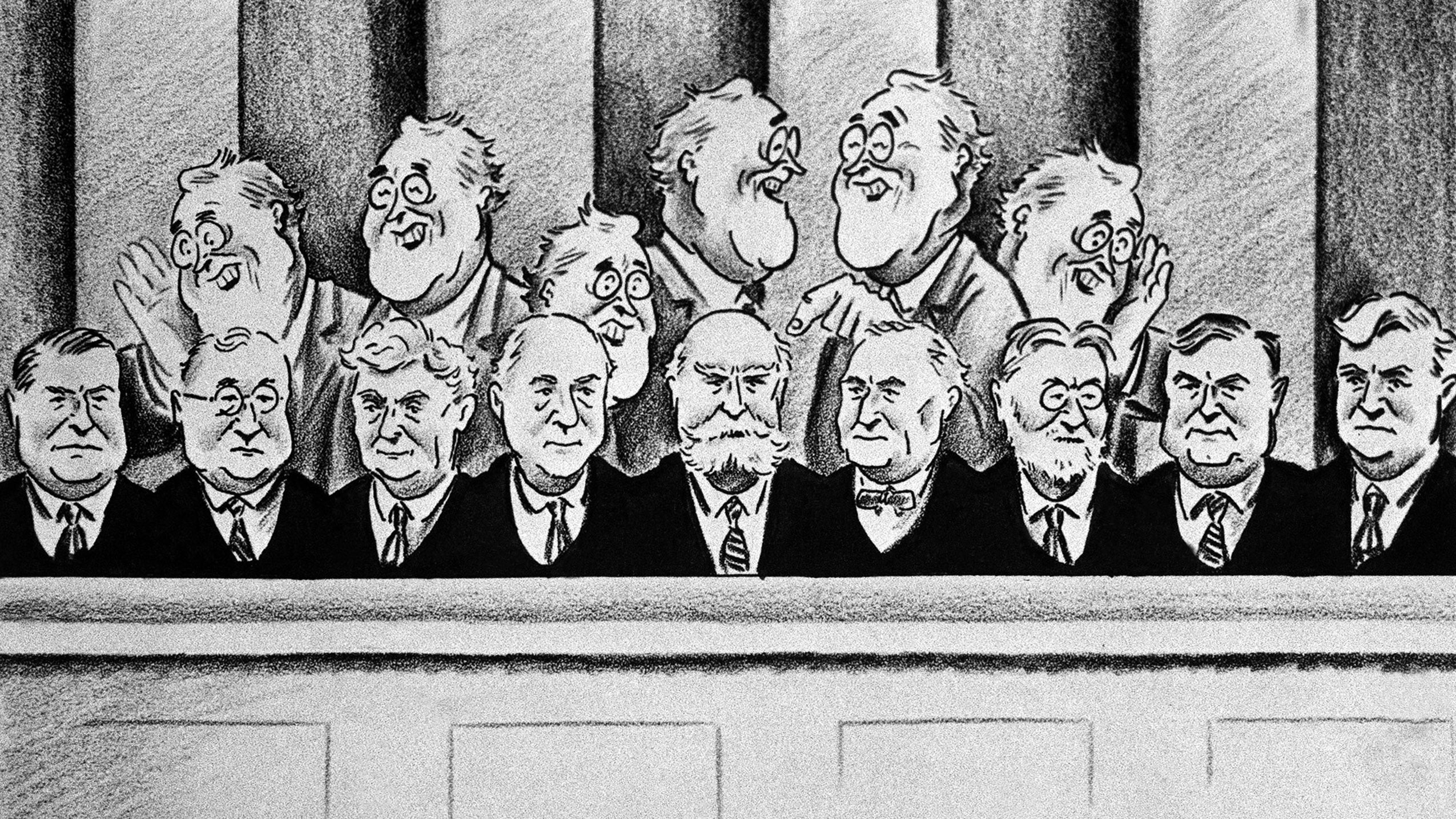Is the Supreme Court in crisis, and if so, how can it be fixed? On Wednesday, three distinguished Court-watchers from across the ideological spectrum debated these questions at a recent Harvard Law School Rappaport Forum, a recurring speaker series established last year thanks to a gift from the Phyllis & Jerome Lyle Rappaport Foundation.
Complaints about the Supreme Court have cropped up throughout American history, but they have taken on a renewed urgency since President Joseph Biden’s inauguration. In the past, some of these criticisms have come from the left, as when President Franklin D. Roosevelt threatened to “pack the courts” to protect New Deal legislation.
Others emerged from the right, like the anger aimed at the “activist bench” that decided Roe v. Wade in 1973. More recently, Democrats, stung by the Republican Senate majority’s refusal to hold hearings on President Barack Obama’s ’91 nominee Merrick Garland ’77 in 2016 and its replacement of Ruth Bader Ginsburg ’56-’58 with Amy Vivian Coney Barrett just weeks before the 2020 presidential election, have reinvigorated calls for reform.

Moderated by Annette Gordon-Reed ’91, the Carl M. Loeb University Professor at Harvard University, the panel featured Linda Greenhouse, senior research scholar in law at Yale Law School and former New York Times reporter; Larry Kramer, president of the William and Flora Hewlett Foundation and former dean of Stanford Law School; and Saikrishna Prakash, the James Monroe Distinguished Professor of Law at the University of Virginia School of Law.
Gordon-Reed began the discussion with a straightforward question: Is there a problem with the nation’s highest court?
Yes, argued Greenhouse, because the appointment process has become more politicized than ever, leading to dogmatic justices and a Court whose legitimacy among the public could be in danger. “After Justice John Paul Stevens retired, we had a Court where all the more liberal members had been appointed by Democrats and all the conservative members had been appointed by Republicans … There had never before been a case … where the public could look at these nine people and see them projecting the ideological preferences of the political party that brought them to the dance.”
Kramer agreed. After Brown v. Board of Education (1954), he said, something changed in the American psyche. The idea that the Court had “final interpretive authority” had been solidified in the public mind and “the perceived power of the Supreme Court in popular political culture vastly expanded.” This “shifted the debate to how to interpret the Constitution,” which created an even bigger incentive for presidents to vet and select judicial candidates who would faithfully execute their agenda. Worse, he said, leaders began to choose nominees who were young enough to influence decision-making for decades after that president has left office.
Not everyone agreed that hyper-partisan appointments are a source of the Court’s issues. For Prakash, it is simply the immense — and final — power the Supreme Court wields. “If I were to identify the problem, I would say it’s judicial amendments to the Constitution with no ready means to overturn them,” he said, adding that the main avenue to check the Court’s power, through constitutional amendment, is highly unlikely to succeed in today’s political environment. His preferred reforms would include a new way to reign in the Court’s power — perhaps one that would allow Congress to override a deeply unpopular judicial decision with a majority or supermajority of votes.
Kramer agreed that accountability to the people was important but argued that the Court should also maintain independence in its decision-making. He suggested looking to other high courts from around the world for ideas on how to better strike that balance, pointing to term limits and staggered terms as possible reform alternatives.
What about court packing, or adding justices?
“I would do it if I thought it could happen,” said Kramer. “But a lot of us put out there the notion of increasing the size of the court, and there is no taste for it.”
Kramer also spoke favorably of a 2005 paper by Roger Cramton and Paul Carrington ’55, which proposed a legislative change that would enable the president to appoint a new justice every two years. After 18 years of service, justices would retain their appointment but would no longer actively decide Supreme Court cases.
In a moment of consensus among all three panelists, both Greenhouse and Prakash agreed that such term limits for justices could be useful — but even so, Prakash demurred, arguing that term limits did not fix what he viewed as the real problem. “I don’t think the Court is out of touch. The problem is that with enough votes, you can change the Constitution,” he said.
Of course, for some, that’s exactly the point: “[Prakash] has said quite a few times that the Court has changed the Constitution … and I just want to say, thank heavens it has,” said Greenhouse.
In the end, the debate circled back to another key reason for the malaise around SCOTUS, and one that all panelists, including moderator Gordon-Reed, could agree on.
“The courts are of no help on political entrenchment. What ails democracy requires a democratic solution. There are no easy fixes. The notion that five of these nine justices will save us from ourselves … it just doesn’t work that way. Never has,” said Kramer.
The Rappaport Forum brings together distinguished academics, thinkers, and activists from across the political spectrum to engage in respectful debate. In welcoming remarks at the beginning of the evening, Harvard Law School Dean John F. Manning ’85 recounted how the then-18-year-old first-year law student Jerry Rappaport established the event’s precursor, the Harvard Law School Forum, shortly after World War II.
“Nearly three quarters of a century later … we launched a new vehicle for robust discussion and debate,” he said. “The HLS Rappaport Forum is designed to promote full, open, vigorous, discussion — a respectful clash of ideas about critical and complicated issues facing our community, our nation, and our world.”
